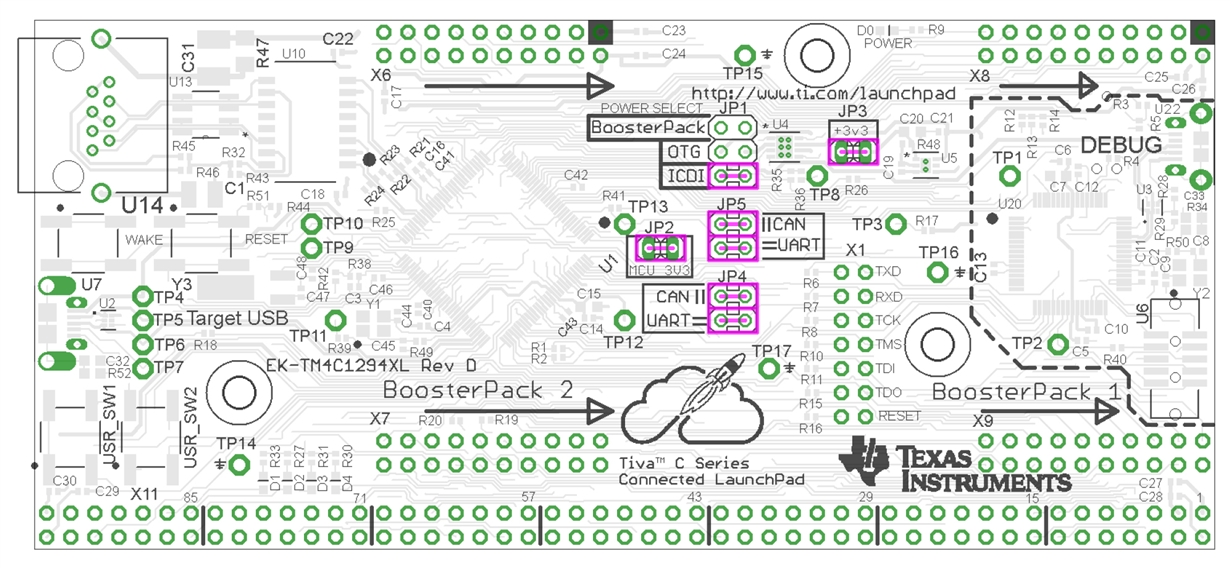Hello everyone, I've encounter a problem with my EK-TM4C1294XL evaluation kit.
At the time when problem arose, Tiva was connected to external power supply (3.3v) over booster pack 1, and had Adafruit CC3000 attached to it. 3.3V power supply was derived from 220V AC to 12V DC external adapter and then adjusted to 3.3V with LM317 circuit. Software inside was modified cc3000 example from TivaWare from basic Web Client app, and it was already running for a few days with no observed problems at all. At one point I've noticed all user LEDs turning off, leaving only the power LED on and the program on board didn't work any more. I tried uploading a program with CCS (v6) but getting error message:
"Error connecting to the target:
Frequency is out of range."
I tried using LM Flash Programmer (Build 1606), to update ICDI firmware(which seemed to give no error message) and the device was recognized in Device manager with assigned COM port. Also tried performing debug port unlock (no error messages on '...TM4C192 class' option, but problem was still present), but when I try to erase flash or do a blank check I get an error message saying:
"**ERROR**: Unable to initialize the target -0!" or
"**ERROR**: Unable to initialize the target -1!" when I try to do unlock debug port on 'Tempest and Firestorm Classes' option
I realize that the board is most probably fried, but before I throw it away I just wanted to check if anyone has any ideas/suggestions?
Thank you for your time :)


